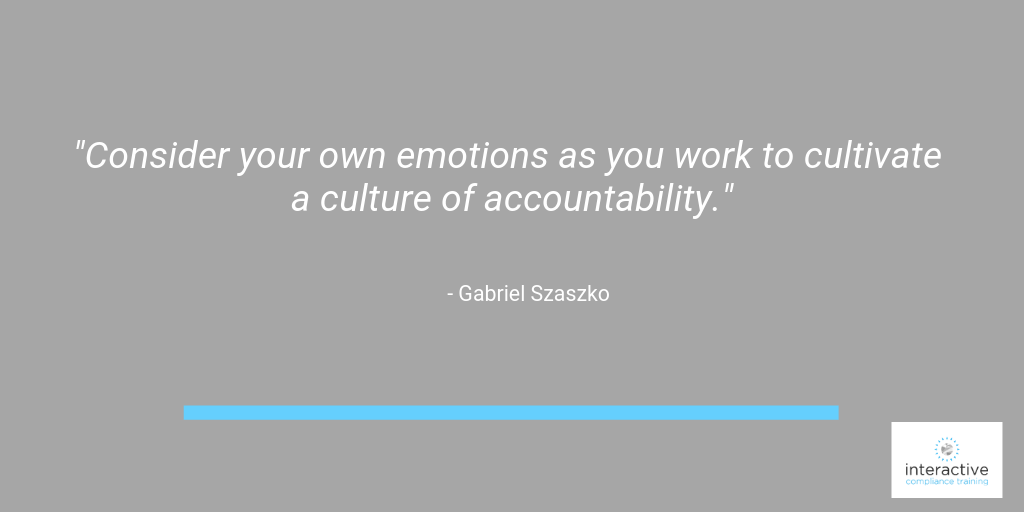
Once upon a time there was a training program that cultivated a thriving culture of compliance throughout an organization. With minimal resources, skills, and bandwidth, a dynamic and creative learning design team triumphed against the odds and created an effective and compelling learning solution in alignment with the goals of the organization. Complete fairy tale? Not quite – it can be done!
In compliance training, we can engage and motivate our learners with stories – through the characters, relationships, conflicts, resolutions, pathways, and insights that bring the most memorable stories to life. When we couple the age-old craft of storytelling with effective instructional design practices, we shape learning solutions that directly impact behavior and bottom-line results alike.
Leveraging the Power of Storytelling
Stories enable us to learn from the experience of others. They humanize situations and allow us to place ourselves outside of our everyday experiences. We are drawn to stories because they transform abstract ideas and hypothetical situations into concrete examples.
In reality, we may not want our learners to fully experience the consequences that every action brings, especially when dealing with sensitive and difficult topics that compliance incidents can raise. Through storytelling, learners can vicariously experience the effect that a decision or action may have on others or the organization. The distance a story can bring to a topic means we can learn from the experience of others without the risk of failure or fear of doing something dreadfully wrong. We can learn about cause and effect without harm.
For example, a scenario can effectively detail out the result of what may have seemed like a harmless incident that, in fact, had disastrous consequences. But, before we start writing that scenario, we need to carefully outline who we’re trying to reach.
In learning design, we take our storytelling skills to a new level by introducing the development of personas into our audience analysis and design processes. Generating personas is standard practice in application design, and learner personas are generalizations of characteristics that provide insight into our audiences’ preferences, motivations, attitudes, and opinions. They serve as reference for our design teams in determining where, when, and how learning is taking place. Learner personas help clarify who we are telling our stories to, and remind us why that audience needs to listen to the stories we are telling. Carefully outlining who you’re reaching with your training, what their emotional “hooks” will be, and what will be meaningful to them allows you to frame the story you want to tell in an eloquent way.

Engaging the Emotions of Our Learners
When taking a narrative approach to learning design, the focus shifts toward establishing resonance with our learners through the use of emotional scripting. We want to motivate our learners to be and stay focused along their way, but what exactly do we want them to feel? How will those feelings effect their interactions with the learning content, each other, and the organization as a whole? What emotions do we want to evoke from our learners as they progress along their learning pathways? And, how can we leverage those emotions to build a culture of accountability within the organization?
Emotional scripting is a design approach used to intentionally shift the emotional state of our learners at different stages along their learning journeys. As we design narrative-based learning, we use emotional scripting to align our content, interactions, and assessments with the emotional states that we want our learners to experience.
Consider your own emotions as you work to cultivate a culture of accountability. Look toward the positive emotions you can evoke in your learners – not just fear of failure, or guilt in doing something wrong. Instead look to emotions such as confidence, gratitude, interest, appreciation, and awareness. Circle back to those learner personas and consider what emotions your learners may have coming in, and how you want them to feel after completing training. And, explore the practice of empathy mapping.
Empathy mapping is an approach to discovering the emotions of your learners by mapping out what they are thinking, feeling, saying, and doing. What do your learners say about compliance training issues? What do they feel when they’re faced with situations that they feel unprepared to handle? What are they saying in those situations? And, what actions are they taking as a result? Mapping these perspectives provides insight that can be directly integrated into the emotional scripting process and create a more compelling story in the training experience.
Inviting the Experts to Contribute
Everyone has a story – even our subject matter experts (SMEs), and chances are that they can make your narrative learning scenarios even better. Most SMEs have heard more stories about the types of scenarios that we build into our training than we may ever have the chance to experience ourselves. The way to leverage that expertise is to ask them for more detail and for a range of stories. Ask them to better define the characters involved, the actions that were (or were not) taken, and the consequences of those actions.
If they bring you rules and regulations, ask for concrete examples and tease the compelling stories out. Take it a step further and ask them how someone might feel if they were in a specific situation – get those emotions into play. And, remember to go back to them with your narrative case studies and scenario-based training and ask them what they think is missing from the story.
Welcoming the Never-Ending Story
Take a look at the compliance training you have in place now, and consider how you can integrate the craft of storytelling into your practice. It may be that your training solution is already story-driven, and these practices can help you facilitate greater emotional resonance with your learners.
Remember, instructional design in an iterative process, and so is storytelling. As learners progress on their narrative-driven learning journeys, their behaviors will change. As those behaviors change, the emotional hooks that drive your narratives may need to change as well.
Step back and take a big-picture look at your compliance training. Think about the stories you are trying to tell, and how these stories fit together as a campaign in support of a culture of compliance across the organization. Think about the emotions you want your learners to experience, along with associated behavioral changes that will support that culture.
In every case, remember that learning never ends, and the story goes on…
